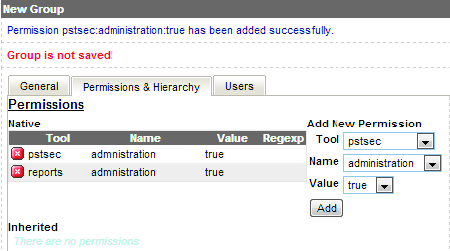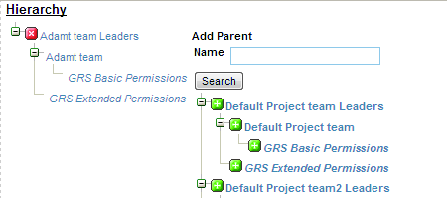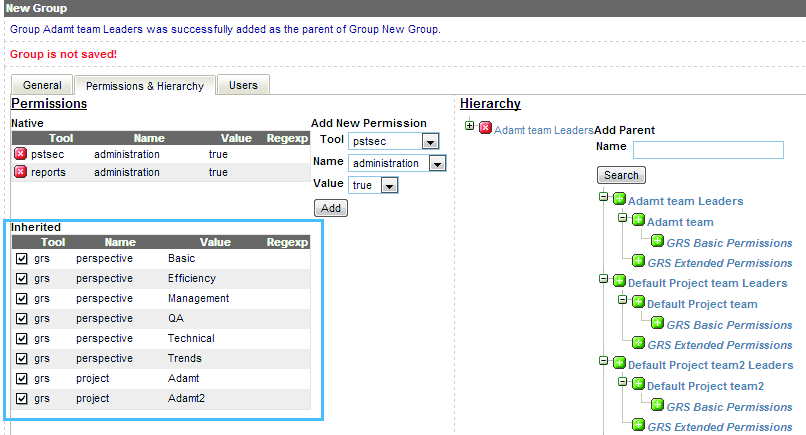In this section:
Creating a Group
If you want to assign specific permissions based on a user's role in a project team, you can create a new permission group.Permission groups contain a set of permissions that allow the user to perform specific actions or give access to specific reports and project data. Some built-in group permissions contain specific user roles (see Built-in User Groups). You should assign users to a default group prior to assigning them to project-related groups because default groups indicate users' roles.
Choose User Administration from the settings menu (gear icon).
- Choose the Groups tab and click Add Group.

- Enter a name and description in the appropriate fields and click Create.
- In the group configuration page, click the Permissions & Hierarchy tab to configure permissions for members of the group and to organize groups, which configures how permissions are inherited from parent groups.

- Click the Users tab to manually add currently stored users to the group.

- Click Save to finish configuring the group.
Automatic Synchronization
You can set groups that have been created manually to automatically synchronize with an equivalent LDAP group if the Use Member Attribute option is enabled (see Configuring LDAP). During automatic synchronization, DTP will:
- Periodically update the list of users assigned to this group based on the members of the equivalent LDAP group.
- Automatically create users if they do not already exist.
- Immediately synchronize groups after changes are saved if the group is new or if automatic synchronization was disabled.
If DTP is configured to use multiple LDAP servers, group synchronization will be based on the first matching LDAP group available.
Editing Groups
- Open User Administration and choose Groups.
- Click on the name of group to open the group configuration page.
- Make changes to the group; see Configuring Group Permissions and Organizing Groups.
- Click Save.
Configuring Group Permissions
See User Administration Overview to learn about particular permissions.
- Open a permission group’s detail page; see Editing Groups.
- Click the Permissions & Hierarchy tab.
- Choose a functionality from the Tool drop-down list.
- Choose a permission setting from the Name drop-down list that describes the range of permissions to grant.
- Choose true or false from the Value drop-down box to grant or deny access to the tool.
- Click Add to include access to the functionality in the group. You can also click the remove button (x) to remove access to the functionality.

- Repeat steps 5 - 8 as necessary and click Save to finish configuring the group.
Organizing Groups
Groups can be hierarchically organized—which allows you to separate groups with “static” privileges (for example, privileges indicating Report Center reports availability) and groups with commonly modified privileges (for example, privileges indicating Report Center project availability).A group may have individual privileges and permissions or might inherit them from an ancestor.
- Open a permission group’s detail page; see Editing Groups.
- Click the Permissions & Hierarchy tab.
- By default, new groups are added as parent nodes. Click the add button (+) in the groups tree to add the node as a parent to the group. You can also click the remove button (x) to remove the parent node.

- Choose the permissions to inherit from the parent group.

- Click Save to finish organizing.





